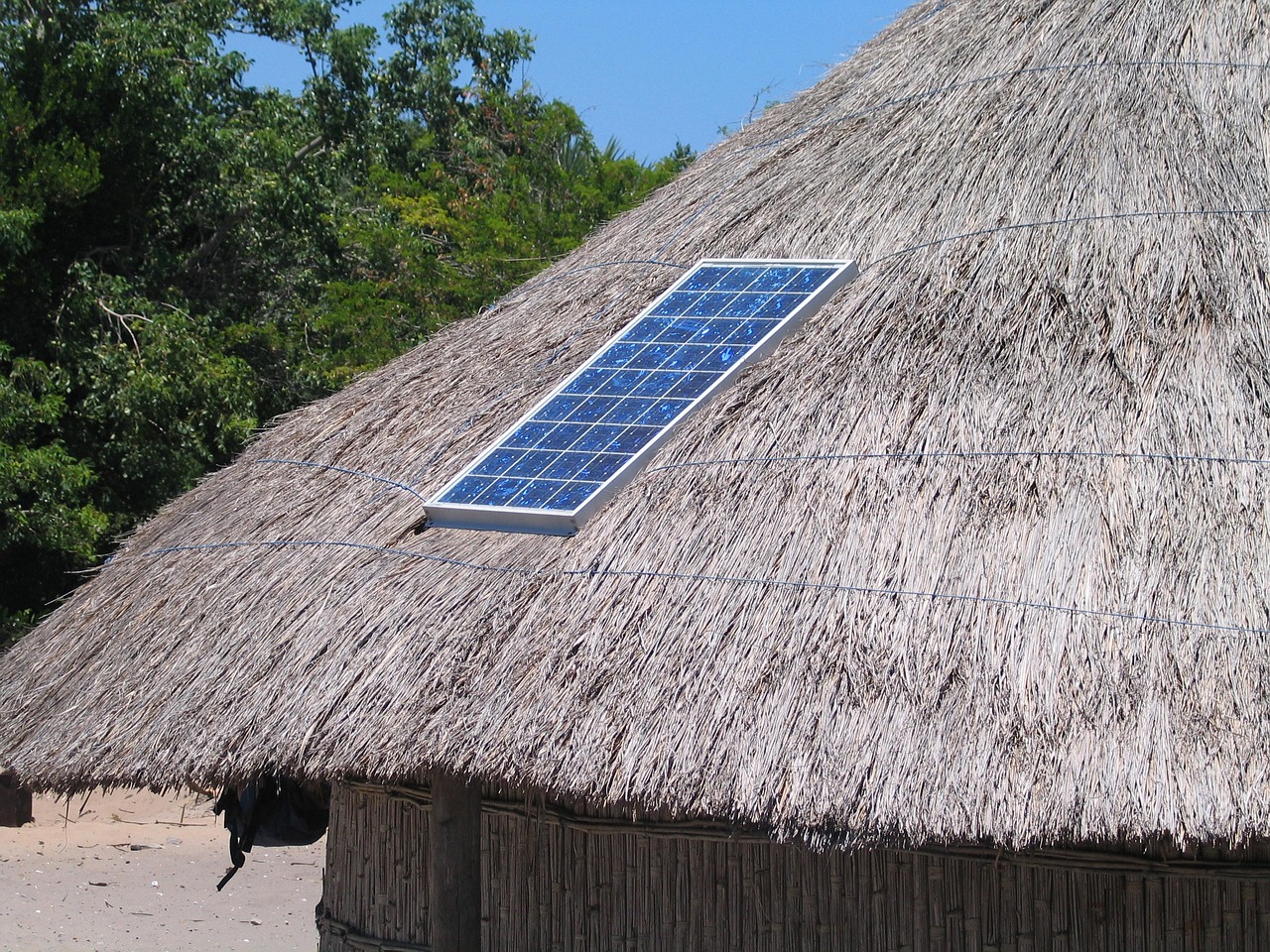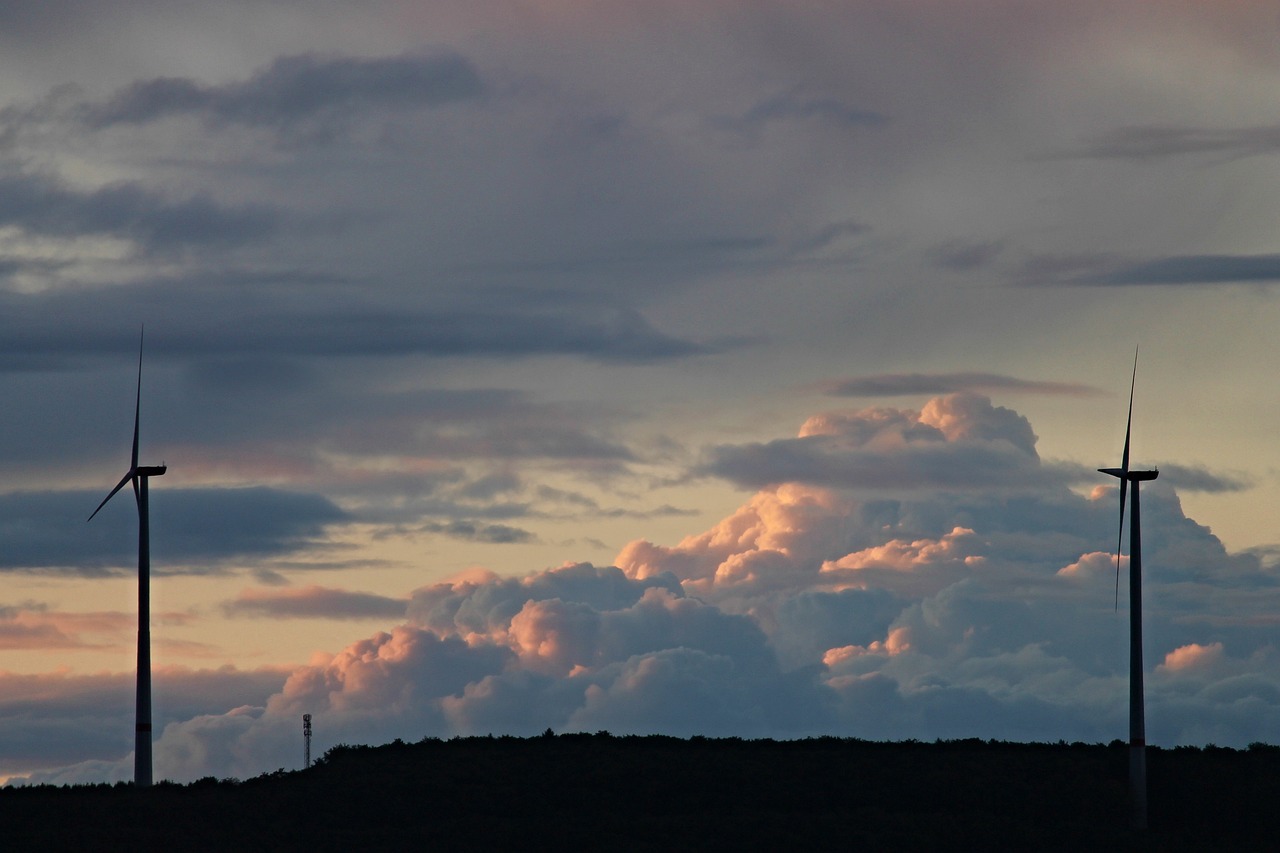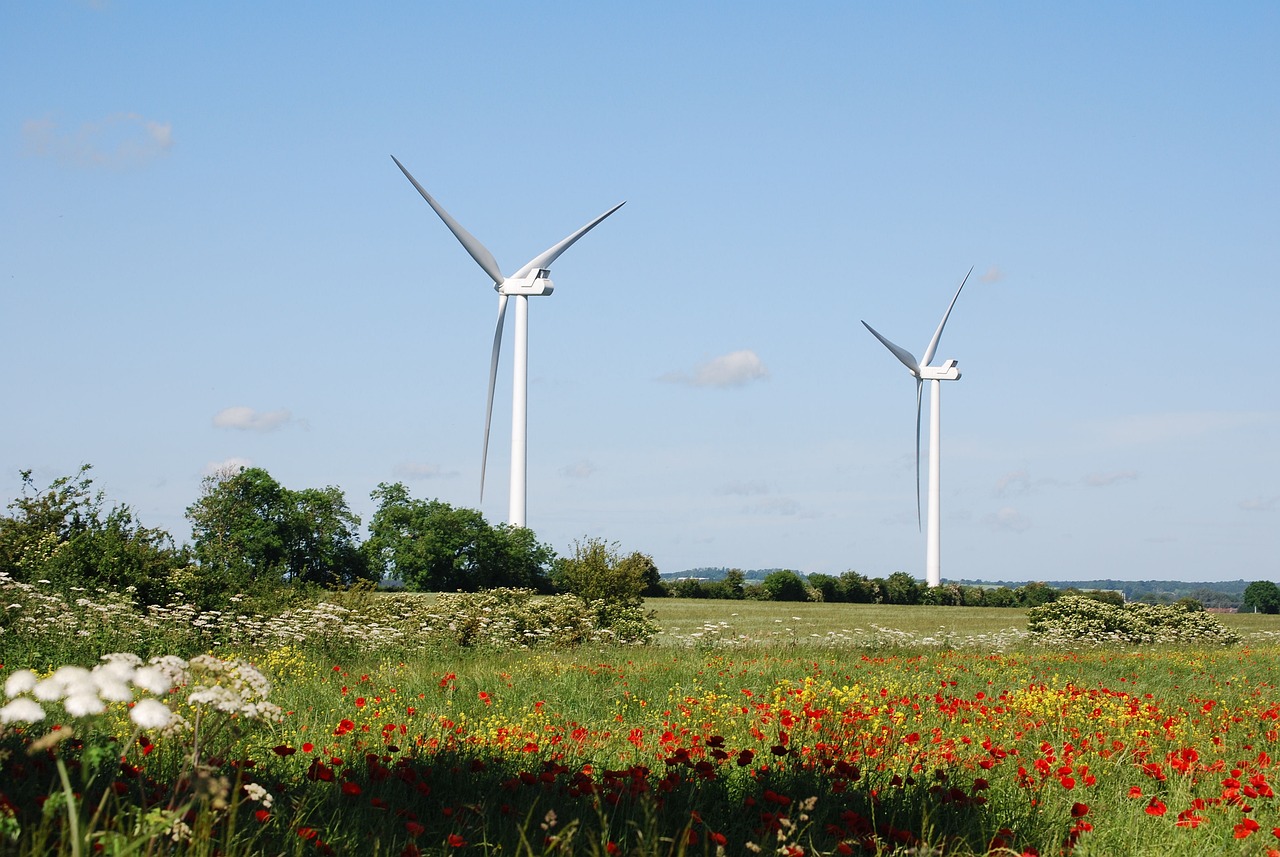Eco-Friendly Innovations in Lighting Technology
In today's world, where environmental concerns are at the forefront of global discussions, the lighting industry is undergoing a remarkable transformation. Eco-friendly innovations in lighting technology are not just a trend; they are a necessity for a sustainable future. With the rise of energy-efficient solutions, solar-powered systems, and smart technologies, we are witnessing a shift that promises to illuminate our spaces while minimizing our carbon footprint. But what does this really mean for us? How can these advancements shape our daily lives and the environments we inhabit? Let’s dive into the exciting world of eco-friendly lighting and discover the incredible innovations that are lighting the way to a greener tomorrow.
LED lighting has revolutionized the industry, offering significant energy savings and longer lifespans compared to traditional bulbs. Imagine a light source that not only brightens your room but also saves you money on your electricity bill! LEDs, or Light Emitting Diodes, use up to 80% less energy than incandescent bulbs, making them a game-changer in the quest for sustainability. They last up to 25 times longer, which means fewer replacements and less waste in landfills. The technology behind LEDs is fascinating; they work by passing an electric current through a semiconductor, which then emits light. This process is not only efficient but also reduces heat output, making your spaces cooler and more comfortable. With their versatility in design and application, LEDs are paving the way for a brighter, more sustainable future.
Imagine harnessing the power of the sun to light up your garden or pathways. Solar-powered lighting systems are doing just that! By converting sunlight into energy, these systems provide illumination without relying on traditional power sources. Whether it's for residential or commercial use, solar lighting solutions are becoming increasingly popular. They can be installed virtually anywhere, from streetlights to outdoor decor, and they offer the added benefit of being easy to maintain. The advantages are numerous: reduced electricity costs, lower environmental impact, and the ability to operate in remote areas without access to the grid. As technology progresses, we can expect more efficient solar panels and batteries, making solar lighting an even more viable option for the future.
Welcome to the era of smart lighting! With the integration of the Internet of Things (IoT) and automation, smart lighting technology is enhancing not only efficiency but also user convenience. Picture this: you walk into a room, and the lights automatically adjust to your preferred brightness and color temperature. Smart lighting systems can be controlled remotely via smartphones or voice-activated devices, allowing users to customize their lighting experience effortlessly. These systems can also learn your habits and adjust accordingly, helping to reduce energy consumption significantly. By optimizing how and when we use lighting, smart systems contribute to a more sustainable lifestyle while enhancing our comfort and productivity.
As concerns about plastic waste continue to rise, the lighting industry is responding with innovations in biodegradable materials. Imagine lighting fixtures that not only illuminate your space but also decompose naturally at the end of their lifecycle! This shift towards sustainable materials is crucial in reducing our environmental footprint. Manufacturers are exploring options like bioplastics and natural fibers that can be used in the production of lighting fixtures. Not only do these materials minimize waste, but they also often require less energy to produce, further contributing to sustainability. The potential impact of biodegradable lighting materials could be monumental, paving the way for a cleaner, greener future.
Did you know that the right lighting can enhance your mood and productivity? Human-centric lighting focuses on optimizing light for health and well-being. This design philosophy takes into account the natural rhythms of our bodies and aims to mimic natural daylight. By adjusting the color temperature and intensity of light throughout the day, human-centric lighting can help regulate our circadian rhythms, improve focus, and enhance overall well-being. This approach is particularly beneficial in workplaces and educational settings, where the right lighting can lead to increased productivity and creativity. As we continue to discover the science behind lighting and its effects on our health, human-centric designs will play a pivotal role in shaping our environments.
Textile-based lighting solutions are where aesthetics meet functionality. Imagine soft, fabric-like materials that not only serve as beautiful decor but also provide illumination! These innovative designs incorporate textiles into lighting, allowing for creative expression while promoting eco-friendliness. By using sustainable materials and production methods, textile lighting can significantly reduce waste and energy consumption. Designers are exploring various fabrics that can diffuse light beautifully, creating warm and inviting atmospheres in homes and public spaces. This fusion of art and technology is redefining how we think about lighting in our interiors.
Energy harvesting technologies are at the forefront of reducing our reliance on traditional energy sources. These systems capture ambient energy—such as kinetic, thermal, or solar energy—and convert it into usable power for lighting. For example, imagine a light that charges itself as you walk by! By integrating energy harvesting technologies, we can create self-sustaining lighting systems that operate independently of the grid. This innovation not only promotes sustainability but also opens up new possibilities for lighting in remote or off-grid locations. As we continue to explore these technologies, the potential for energy independence and reduced environmental impact is immense.
Recycling and upcycling initiatives are transforming waste materials into new lighting products, making significant strides towards a circular economy. Imagine a lamp made from discarded glass bottles or a chandelier crafted from old bicycle parts! These creative projects not only reduce waste but also highlight the importance of rethinking how we use materials. Many designers and companies are embracing this philosophy, showcasing how beautiful and functional lighting can emerge from what would otherwise be considered trash. By promoting recycling and upcycling, the lighting industry is taking a proactive approach to sustainability, inspiring consumers to think differently about their purchases.
The future of lighting technology is leaning towards sustainability and innovation, with exciting trends on the horizon. As we continue to prioritize eco-friendly solutions, we can expect advancements in energy efficiency, smart technologies, and sustainable materials. The integration of artificial intelligence in lighting systems will enable even greater customization and efficiency, while new materials will emerge to further reduce environmental impacts. The shift towards sustainable practices in the lighting industry is not just a passing phase; it's a fundamental change that will shape our environments for generations to come. So, as we look ahead, let’s embrace these innovations and illuminate our world in a way that honors our planet.
- What are the benefits of LED lighting? LED lighting is energy-efficient, has a longer lifespan, and reduces heat output compared to traditional bulbs.
- How do solar-powered lights work? Solar-powered lights convert sunlight into electricity using solar panels, providing illumination without relying on traditional power sources.
- What is human-centric lighting? Human-centric lighting mimics natural daylight to enhance mood and productivity by adjusting color temperature and intensity throughout the day.
- Can textile lighting be sustainable? Yes, textile lighting can be made from sustainable materials and can be designed to reduce waste while providing aesthetic appeal.

Energy-Efficient LED Lighting
In recent years, LED lighting has emerged as a game-changer in the world of illumination, transforming not just how we light our homes and businesses, but also how we think about energy consumption. Have you ever stopped to consider just how much energy traditional incandescent bulbs waste? With their high heat output and short lifespans, these old-school bulbs are like a leaky faucet, dripping energy and money down the drain. In contrast, LED lights are designed to be incredibly energy-efficient, using up to 80% less energy than their incandescent counterparts. This means not only lower electricity bills for consumers but also a significant reduction in greenhouse gas emissions, making LEDs a key player in the fight against climate change.
But what exactly makes LED technology so efficient? LEDs, or Light Emitting Diodes, produce light through a process called electroluminescence, which involves passing an electrical current through a semiconductor material. This process generates light with minimal heat production, allowing LEDs to shine brightly without wasting energy on heat. To put it into perspective, consider this: while a traditional bulb might convert only about 10% of its energy into light, an LED can convert up to 90%. This efficiency not only extends the lifespan of the bulbs—often lasting up to 25,000 hours or more—but also minimizes the frequency of replacements, reducing waste in landfills.
Moreover, the benefits of LED lighting extend beyond just energy savings. They are incredibly versatile, available in a wide range of colors and styles, making them suitable for various applications, from cozy home environments to vibrant commercial spaces. Whether you're looking to create a warm ambiance in your living room or a bright, stimulating atmosphere in a retail store, LEDs can be tailored to meet your specific needs. Additionally, many LED products are now compatible with smart lighting systems, allowing users to control their lighting remotely, set schedules, and even adjust brightness levels based on the time of day or activity, further enhancing energy efficiency.
To illustrate the impact of LED lighting, consider the following table that compares the energy consumption and lifespan of various lighting options:
| Lighting Type | Energy Consumption (Watts) | Lifespan (Hours) | Annual Cost (Based on 3 hours/day usage) |
|---|---|---|---|
| Incandescent | 60 | 1,000 | $21.60 |
| CFL (Compact Fluorescent) | 15 | 10,000 | $9.00 |
| LED | 10 | 25,000 | $6.00 |
As seen in the table, the LED option not only consumes the least amount of energy but also has the longest lifespan, resulting in significant savings over time. This kind of efficiency is not just good for your wallet; it contributes to a more sustainable future as well. In a world where energy conservation is becoming increasingly crucial, adopting LED lighting is a step everyone can take toward a greener lifestyle.
In conclusion, the transition to energy-efficient LED lighting is more than just a trend; it's a necessary evolution in our approach to illumination. By embracing this technology, we can illuminate our spaces without dimming the future of our planet. So, the next time you're in the market for new lighting, remember: choosing LEDs is not just a smart choice for your home—it's a bright step towards a sustainable future!

Solar-Powered Lighting Solutions
Imagine a world where the sun not only warms our skin but also lights up our homes and streets. are making this dream a reality, harnessing the sun's energy to provide sustainable and efficient illumination. These innovative systems are not just a trend; they represent a significant leap towards a greener future. By utilizing renewable energy, solar lighting reduces our reliance on fossil fuels and minimizes our carbon footprint.
Solar-powered lights are incredibly versatile, finding applications in various settings, from residential gardens to expansive commercial spaces. One of the most compelling benefits of these systems is their ability to operate independently of the electrical grid. This independence is particularly advantageous in remote areas where connecting to traditional power sources is impractical. Moreover, the installation process is often straightforward, requiring minimal infrastructure, which can save both time and money.
In residential settings, solar lights can illuminate pathways, driveways, and outdoor living spaces. For instance, solar garden lights not only enhance the aesthetic appeal of a yard but also ensure safety during nighttime. On the commercial front, solar street lights are becoming increasingly popular. They provide bright, reliable lighting while significantly reducing energy costs. These lights typically come equipped with advanced features such as motion sensors, which further optimize energy use by turning on only when needed.
Another exciting aspect of solar lighting is its potential to contribute to energy savings. According to recent studies, switching to solar-powered solutions can lead to a reduction in electricity bills by up to 80%. This is especially significant for businesses that operate long hours or in areas with high energy costs. Additionally, many solar lighting products are designed to be durable and long-lasting, with some models boasting lifespans of over 25 years. This longevity means that the initial investment can pay off substantially over time.
However, it's essential to consider the initial costs associated with solar lighting systems. While prices have decreased significantly due to advancements in technology, the upfront investment can still be a hurdle for some. Fortunately, various government incentives and rebates are available to encourage the adoption of renewable energy solutions. These financial aids can help offset costs, making solar lighting a more accessible option for homeowners and businesses alike.
As we move towards a more sustainable future, the role of solar-powered lighting solutions will only continue to grow. Innovations in solar technology, such as integrated solar panels and smart lighting systems, are enhancing the functionality and efficiency of these products. With ongoing research and development, we can expect even more efficient systems that will further reduce energy consumption and improve user experience.
In conclusion, solar-powered lighting solutions are not just about illuminating spaces; they embody a shift towards sustainability and environmental responsibility. By embracing this technology, we can all contribute to a cleaner planet while enjoying the benefits of modern lighting. So, the next time you’re thinking about upgrading your lighting, consider the sun as your ultimate energy source!
- How do solar-powered lights work? Solar-powered lights function by converting sunlight into electricity through solar panels. This electricity is stored in batteries and used to power the lights at night.
- Are solar lights effective in cloudy weather? Yes, solar lights can still charge in cloudy weather, although they may not be as efficient as on sunny days. Most systems are designed to store enough energy to last through several cloudy days.
- How long do solar lights last? The lifespan of solar lights varies by model, but many can last up to 25 years with proper maintenance.
- Can I install solar lights myself? Yes, most solar lighting systems are designed for easy installation and do not require professional assistance.

Smart Lighting Systems
In the fast-paced world we live in today, are becoming a game-changer in the way we illuminate our spaces. Imagine walking into a room, and the lights automatically adjust to your preferred brightness and color temperature, all while conserving energy. This is not a scene from a sci-fi movie; it’s the reality brought to us by the Internet of Things (IoT) and advanced automation technologies. Smart lighting systems are designed to enhance the user experience while significantly reducing energy consumption, making them a cornerstone of eco-friendly innovations in lighting technology.
At the heart of smart lighting technology is the ability to control lighting remotely through smartphones or voice-activated devices. This means you can turn off the lights in your home while you’re at work or set a schedule for your outdoor lights to turn on at sunset and off at sunrise. With the integration of sensors, these systems can also detect when a room is occupied and adjust the lighting accordingly. This not only creates a more comfortable environment but also leads to substantial energy savings. For instance, studies show that smart lighting systems can reduce energy usage by up to 80% compared to traditional lighting solutions.
Moreover, smart lighting systems often come equipped with features that allow users to customize their lighting experience. You can create different scenes for various activities, whether it’s a cozy movie night, an energetic workout session, or a productive work environment. The flexibility offered by these systems means that lighting can be tailored to enhance mood and productivity, making them ideal for both residential and commercial spaces.
But how do these systems work? Here’s a quick breakdown:
| Component | Description |
|---|---|
| Smart Bulbs | LED bulbs that can be controlled remotely and adjusted for brightness and color. |
| Hub | A central device that connects smart bulbs to your Wi-Fi network, allowing for remote control. |
| Mobile App | An application that lets users control their lighting system from anywhere. |
| Sensors | Devices that detect motion or light levels to automate lighting adjustments. |
The integration of smart lighting systems doesn't just stop at individual homes. In commercial settings, businesses are beginning to realize the benefits of these systems as well. For example, office buildings can utilize smart lighting to create a more engaging work environment while also cutting down on operational costs. By using occupancy sensors and daylight harvesting techniques, companies can significantly reduce their energy bills and carbon footprint.
In conclusion, are not just a trend; they represent a fundamental shift in how we think about lighting. They offer a blend of convenience, energy efficiency, and customization that traditional lighting simply cannot match. With ongoing advancements in technology, the future of smart lighting looks bright, promising even more innovative solutions that will continue to enhance our lives while being kind to the planet.
- What are smart lighting systems? Smart lighting systems are advanced lighting solutions that can be controlled remotely and often include features like sensors and automation to enhance energy efficiency.
- How do smart lighting systems save energy? They save energy by adjusting brightness based on occupancy and natural light levels, and by allowing users to control lights remotely.
- Can I use smart lighting in my existing fixtures? Yes, many smart bulbs are designed to fit standard fixtures, making it easy to upgrade your current lighting.
- Are smart lighting systems expensive? While the initial investment might be higher than traditional lighting, the long-term energy savings often make them a cost-effective choice.

Biodegradable Lighting Materials
As the world grapples with plastic waste and its detrimental effects on the environment, the lighting industry is stepping up to the challenge by innovating with biodegradable materials. These materials are not just a trend; they represent a significant shift towards sustainability in design and production. When we talk about biodegradable lighting, we’re referring to products that can break down naturally and return to the earth without leaving harmful residues. Imagine a light fixture that, instead of contributing to the landfill, can decompose and nourish the soil! This is the future we are striving for.
Biodegradable lighting materials can be made from various sources. Some of the most promising options include:
- Plant-based polymers: Derived from natural resources like corn starch or sugarcane, these materials can effectively replace conventional plastics.
- Recycled paper: Used creatively, paper can be transformed into stylish and functional light fixtures that are both eco-friendly and aesthetically pleasing.
- Natural fibers: Materials such as bamboo and hemp not only provide durability but also add a unique touch to lighting designs.
The benefits of using biodegradable materials in lighting are manifold. Firstly, they significantly reduce the carbon footprint associated with production and disposal. Traditional lighting fixtures, often made from non-recyclable plastics, contribute to the growing waste crisis. On the other hand, biodegradable options can break down in composting environments, thus minimizing landfill contributions. Secondly, these materials often require less energy to produce, which aligns perfectly with the principles of sustainability.
Moreover, using biodegradable materials can enhance the overall design of lighting products. Designers are increasingly experimenting with these materials to create unique textures and shapes that stand out in any space. For instance, a lamp made from recycled paper can have an organic look that adds warmth to a room, while a fixture crafted from plant-based polymers can offer sleek, modern lines without the environmental guilt.
However, it’s essential to consider the lifecycle of these materials. While they are designed to break down, the conditions under which they decompose can vary. For example, some biodegradable materials require industrial composting facilities to break down effectively, while others may decompose in home composting setups. Therefore, it is crucial for consumers to be informed about the disposal methods to ensure these materials fulfill their eco-friendly promise.
In conclusion, biodegradable lighting materials are paving the way for a more sustainable future in the lighting industry. By choosing products made from these innovative materials, consumers can play a part in reducing plastic pollution and promoting a circular economy. As we continue to explore and embrace these eco-friendly alternatives, we’re not just illuminating spaces; we’re also illuminating a path towards a cleaner, greener planet.
Q1: What are biodegradable lighting materials?
A1: Biodegradable lighting materials are those that can decompose naturally without leaving harmful residues, often made from plant-based polymers, recycled paper, or natural fibers.
Q2: How do biodegradable materials benefit the environment?
A2: They reduce plastic waste in landfills, require less energy to produce, and can break down in composting environments, thus minimizing their carbon footprint.
Q3: Can I compost biodegradable lighting products at home?
A3: It depends on the specific material. Some biodegradable products can be composted at home, while others may require industrial composting facilities to decompose effectively.

Human-Centric Lighting Design
In today's fast-paced world, the way we light our environments can have a profound impact on our health, mood, and productivity. is an innovative approach that focuses on optimizing light to enhance well-being. Imagine walking into a room that feels just right—where the light not only illuminates but also uplifts your spirit. This is the essence of human-centric lighting, which takes into account the biological and psychological effects of light on individuals.
At the core of this design philosophy is the understanding that different types of light can influence our circadian rhythms, energy levels, and even our emotional states. For instance, exposure to bright, cool-toned light during the day can help boost alertness and concentration, while warmer, softer light in the evening can promote relaxation and prepare the body for sleep. This is akin to how the sun rises and sets, naturally guiding our daily rhythms. By mimicking these natural patterns, human-centric lighting aims to create spaces that are not just functional but also supportive of our overall well-being.
To implement human-centric lighting effectively, designers often utilize a combination of color temperature, intensity, and directionality. For example, in office spaces, a lighting system that adjusts throughout the day can help maintain high levels of productivity. During the morning, brighter, cooler light can invigorate employees, while softer, warmer tones in the late afternoon can signal that it's time to wind down. This adaptability is not just a luxury; it's becoming essential in creating environments that cater to our natural instincts.
Moreover, the integration of technology has made it easier than ever to achieve human-centric lighting. Smart lighting systems equipped with sensors can automatically adjust based on the time of day or the presence of individuals in a room. This not only enhances comfort but also contributes to energy efficiency. Imagine walking into a room and having the lights adjust to your preferences without you lifting a finger. It's like having a personal lighting assistant!
The benefits of human-centric lighting extend beyond mere aesthetics. Research has shown that environments designed with these principles can lead to increased productivity, reduced stress levels, and even improved health outcomes. For instance, schools that have adopted human-centric lighting have reported better student performance and reduced absenteeism. Similarly, healthcare facilities that utilize this approach see patients experiencing less anxiety and quicker recovery times. It’s a win-win situation that underscores the importance of thoughtful lighting design.
In conclusion, human-centric lighting design is not just about illuminating spaces; it's about creating environments that nurture our well-being. As we continue to explore the intersection of technology and design, the future looks bright—literally! By prioritizing the needs of individuals, we can transform our spaces into havens of health and productivity. So, the next time you flick a switch, consider the profound impact that light can have on your life. Are you ready to embrace the change?
Frequently Asked Questions
- What is human-centric lighting? Human-centric lighting focuses on optimizing light to enhance human well-being, considering factors like color temperature and intensity.
- How does lighting affect mood and productivity? Different types of lighting can influence our circadian rhythms and energy levels, thereby impacting our mood and productivity.
- Can smart technology improve human-centric lighting? Yes, smart lighting systems can automatically adjust to enhance comfort and energy efficiency based on individual preferences and environmental factors.
- What are the benefits of using human-centric lighting in schools and healthcare? Implementing human-centric lighting in these settings can lead to better performance, reduced stress, and improved health outcomes.

Innovative Textile Lighting
When you think of lighting, what often comes to mind are the standard bulbs and fixtures that have dominated our homes and workplaces for decades. But what if I told you that textile lighting is emerging as a game-changer in the world of illumination? This innovative approach combines functionality with artistry, creating a unique blend of aesthetics and practicality that can transform any space. Imagine a room where the walls are not just barriers but canvases that glow with soft, ambient light, all thanks to fabric-based lighting solutions.
Textile lighting is not just about looks; it also champions sustainability. By using eco-friendly materials and production techniques, textile lighting solutions are paving the way for a greener future. For instance, many designers are now incorporating recycled fabrics into their creations, which not only reduces waste but also adds a unique character to each piece. Think of it as giving a second life to materials that would otherwise end up in a landfill. This approach not only minimizes environmental impact but also supports the growing trend of upcycling in design.
One of the most exciting aspects of textile lighting is its versatility. These fixtures can be tailored to fit various decor styles, from modern minimalist to bohemian chic. They can be suspended from ceilings, integrated into furniture, or even used as wall hangings. The possibilities are endless! For example, a large, flowing fabric pendant light can serve as a stunning centerpiece in a dining room, while smaller fabric sconces can create a cozy atmosphere in a reading nook. The soft glow that emanates from these textiles can evoke feelings of warmth and comfort, making any space feel more inviting.
Moreover, the technology behind textile lighting is advancing at a rapid pace. Many modern textile lights now incorporate LED technology, which means they are not only energy-efficient but also long-lasting. This fusion of textiles and technology allows for dynamic lighting solutions that can adapt to different moods and settings. Imagine controlling the brightness or color of your fabric light with just a tap on your smartphone! This integration of smart technology into textile lighting solutions enhances user experience and provides an additional layer of convenience.
As we look to the future, textile lighting is poised to play a significant role in reshaping the way we illuminate our environments. Designers and engineers are continually experimenting with new materials and technologies, leading to innovative designs that challenge traditional concepts of lighting. With an increasing focus on sustainability and aesthetics, the future of textile lighting is not just bright; it’s also sustainable. By embracing this trend, we can create spaces that are not only visually stunning but also environmentally responsible.
In conclusion, innovative textile lighting represents a fascinating intersection of design, technology, and sustainability. It invites us to rethink our approach to illumination and encourages a more conscious consideration of the materials we use. So, the next time you’re redecorating or looking to upgrade your lighting, consider the magical possibilities that textile lighting can offer. It’s more than just lighting; it’s an opportunity to express your style while making a positive impact on the planet.
- What is textile lighting? Textile lighting refers to lighting fixtures made from fabric materials, combining aesthetic appeal with functionality.
- Are textile lights energy-efficient? Yes, many textile lighting solutions incorporate LED technology, making them energy-efficient and long-lasting.
- Can I customize textile lighting? Absolutely! Textile lighting can be tailored to fit various styles and preferences, allowing for a personalized touch in your decor.
- Is textile lighting sustainable? Many textile lighting designs utilize eco-friendly and recycled materials, contributing to sustainability in the lighting industry.

Energy Harvesting Technologies
In our quest for sustainable living, are emerging as game-changers in the lighting industry. Imagine a world where your lights are powered not just by the grid, but by the very energy around us—sounds futuristic, right? Well, it's happening now! Energy harvesting refers to the process of capturing and storing energy from various ambient sources, such as light, heat, and motion, to power devices and systems. This innovation is particularly exciting for lighting solutions, as it reduces our reliance on traditional energy sources and minimizes our carbon footprint.
One of the most fascinating aspects of energy harvesting is its versatility. For instance, solar energy is one of the most commonly harnessed forms, converting sunlight into electricity to power outdoor lighting, street lamps, and even garden lights. By utilizing solar panels, these systems can operate independently, providing illumination even in remote areas without access to electrical infrastructure. This not only saves energy but also cuts down on installation costs, making it an attractive option for both residential and commercial applications.
Another innovative method involves kinetic energy harvesting, which captures energy from movement. Think of all the foot traffic in busy urban areas or the motion generated by vehicles. Technologies such as piezoelectric sensors can convert the pressure and vibrations from footsteps or passing cars into electrical energy. This energy can then be stored and used to power nearby lighting systems. Imagine walking down a bustling street, and with each step you take, you're contributing to the lighting of the area—it's like a dance with technology!
Moreover, there are also opportunities to harness thermal energy. This involves capturing heat generated from various sources, such as industrial processes or even the warmth from our bodies. By using thermoelectric generators, we can convert this heat into electricity, which can then be used to power lights in places like factories or public transport systems. It's a brilliant way to utilize energy that would otherwise go to waste.
As we look towards the future, the integration of these technologies is expected to grow. The potential for energy harvesting in lighting systems is vast, and it aligns perfectly with the global push for sustainability. However, it's essential to consider the challenges that come with these technologies. For instance, the efficiency of energy conversion and the initial costs of setting up such systems can be barriers to widespread adoption. But as technology advances and costs decrease, we can expect to see a significant shift in how we think about lighting.
In conclusion, energy harvesting technologies are not just a trend; they are paving the way for a more sustainable future in lighting. By harnessing the energy around us, we can illuminate our spaces while being kinder to our planet. The innovation in this field is just beginning, and who knows what incredible advancements lie ahead!
- What is energy harvesting?
Energy harvesting is the process of capturing and storing energy from ambient sources like light, heat, and motion to power devices. - What are some examples of energy harvesting technologies?
Common examples include solar panels, piezoelectric sensors for kinetic energy, and thermoelectric generators for thermal energy. - How does energy harvesting benefit the environment?
By reducing reliance on traditional energy sources, energy harvesting technologies help lower carbon emissions and promote sustainability.

Recycling and Upcycling in Lighting
In an era where sustainability is not just a buzzword but a necessity, recycling and upcycling in the lighting industry have emerged as innovative solutions to combat waste and promote eco-friendliness. Imagine a world where discarded materials are transformed into stunning lighting fixtures that not only illuminate our spaces but also tell a story of renewal. This is the reality that many forward-thinking companies are creating today.
Recycling involves processing used materials to create new products, while upcycling takes it a step further by creatively repurposing items that would otherwise be thrown away. Both practices are essential in reducing the environmental impact of lighting production. For instance, old glass bottles can be turned into beautiful pendant lights, while discarded metal scraps can be reimagined as stylish lamps. This not only diverts waste from landfills but also reduces the need for new raw materials, thereby conserving natural resources.
One of the most exciting aspects of recycling and upcycling in lighting is the creativity it inspires. Designers are increasingly looking to unconventional materials to craft unique lighting solutions. For example, some have utilized reclaimed wood to create rustic chandeliers, while others have incorporated upcycled plastics into modern, sleek designs. This trend not only highlights the potential of waste materials but also encourages consumers to think differently about what can be considered valuable.
Moreover, businesses that embrace recycling and upcycling often find themselves resonating with a growing demographic of eco-conscious consumers. These individuals are not just looking for functional lighting solutions; they are seeking products that align with their values of sustainability and environmental responsibility. As a result, companies that prioritize these practices not only contribute to a healthier planet but also gain a competitive edge in the marketplace.
To illustrate the impact of recycling and upcycling in the lighting sector, consider the following table showcasing some innovative examples:
| Material | Recycled/Upcycled Product | Environmental Benefit |
|---|---|---|
| Glass Bottles | Pendant Lights | Reduces landfill waste and conserves energy used in glass production. |
| Wood Pallets | Chandeliers | Promotes the use of reclaimed wood, minimizing deforestation. |
| Plastic Containers | Table Lamps | Decreases plastic waste and encourages creative reuse. |
As we look to the future, the importance of recycling and upcycling in lighting cannot be overstated. These practices not only help in reducing waste but also foster a culture of innovation and creativity. By choosing recycled or upcycled lighting solutions, consumers can make a significant impact on the environment while enhancing their living or working spaces with unique and stylish designs. So, the next time you flick on a light, consider the journey it took to get there—one that may have transformed waste into a work of art.
- What is the difference between recycling and upcycling? Recycling involves breaking down materials to create new products, while upcycling creatively repurposes items without extensive processing.
- How can I find upcycled lighting products? Many retailers now offer upcycled lighting options, and local artisans often create unique pieces from reclaimed materials.
- Are upcycled lighting products more expensive? Prices can vary, but many upcycled products are competitively priced, especially when considering their unique craftsmanship.
- What are the environmental benefits of using recycled lighting? Using recycled lighting helps reduce landfill waste, conserves natural resources, and lowers carbon emissions associated with manufacturing new products.

The Future of Eco-Friendly Lighting
As we stand on the cusp of a new era in illumination, the future of eco-friendly lighting is not just bright—it’s brilliantly innovative. The trends we see emerging today are paving the way for a sustainable tomorrow, where our approach to lighting will be intertwined with our commitment to the environment. Imagine walking into a room where the lights adjust automatically to your mood, where every bulb is not just energy-efficient but also made from materials that won’t harm our planet. This is not science fiction; this is the future we are heading towards.
One of the most exciting developments is the integration of renewable energy sources into lighting systems. We can expect to see lighting solutions that are not only solar-powered but also capable of harnessing wind or kinetic energy. For instance, imagine streetlights that generate power through the movement of pedestrians or vehicles passing by—this concept is already being tested in various urban settings around the globe. The idea of energy harvesting will redefine how we think about power consumption and sustainability.
Moreover, the rise of smart lighting systems is set to revolutionize our everyday experiences. These systems, equipped with IoT capabilities, will allow users to control their lighting through smartphones or voice commands, optimizing energy use based on real-time data. Think about it: lights that know when to dim or brighten based on the time of day or the presence of people in a room. This level of automation not only enhances user convenience but also significantly reduces energy waste.
Additionally, the materials used in lighting fixtures are evolving. The future will see an increase in biodegradable and recyclable materials being utilized in the production of light fixtures. As the world grapples with plastic waste, lighting manufacturers are stepping up to the plate, developing products that can decompose naturally or be repurposed at the end of their life cycle. This commitment to sustainability will be a game changer in reducing the environmental footprint of the lighting industry.
Another fascinating aspect of the future is the concept of human-centric lighting. Research indicates that lighting can significantly affect our mood and productivity. By tailoring light to mimic natural daylight cycles, we can create environments that promote well-being and efficiency. Imagine offices that adjust their lighting throughout the day to align with our biological rhythms, enhancing focus and reducing fatigue. This is where science meets design, creating spaces that are not just functional but also nurturing.
As these innovations unfold, we also need to consider their potential impact on the economy. The shift towards eco-friendly lighting solutions will create new jobs and industries focused on sustainable practices. The lighting sector is already witnessing a surge in startups dedicated to developing cutting-edge technologies that prioritize the environment. This evolution will foster a circular economy, where waste is minimized, and resources are reused, ensuring that lighting solutions contribute positively to our planet.
In conclusion, the future of eco-friendly lighting is not merely about switching to energy-efficient bulbs; it’s about reimagining how we illuminate our world. With advancements in technology, materials, and design, we are poised to create a future that is not only brighter but also greener. As consumers, we have the power to drive this change by supporting sustainable practices and innovations. Together, we can light the way towards a more sustainable future.
- What are eco-friendly lighting options? Eco-friendly lighting options include LED lights, solar-powered lights, and fixtures made from sustainable materials.
- How do smart lighting systems work? Smart lighting systems use IoT technology to allow users to control their lighting remotely, optimizing energy efficiency and convenience.
- What is human-centric lighting? Human-centric lighting focuses on designing lighting that enhances mood and productivity by mimicking natural light patterns.
- What are energy harvesting technologies? Energy harvesting technologies capture ambient energy, such as solar or kinetic energy, to power lighting systems, reducing reliance on traditional energy sources.
Frequently Asked Questions
- What are the main benefits of using LED lighting?
LED lighting is a game-changer! Not only does it consume significantly less energy than traditional bulbs, but it also lasts up to 25 times longer. This means fewer replacements and lower electricity bills, making your wallet happy while being kind to the planet!
- How does solar-powered lighting work?
Solar-powered lighting systems harness the sun's energy using solar panels. During the day, these panels collect sunlight and convert it into electricity, which is stored in batteries. When the sun sets, the stored energy powers the lights, providing illumination without relying on the grid. It's like having your own mini power plant!
- What is smart lighting, and how can it benefit me?
Smart lighting systems use IoT technology to allow you to control your lights remotely or automatically. Imagine adjusting your lights from your phone or setting them to turn on and off based on your schedule! This not only enhances convenience but also helps reduce energy consumption, making your home more efficient.
- Are biodegradable lighting materials effective?
Absolutely! Biodegradable materials are designed to break down naturally over time, reducing plastic waste in landfills. Innovations in this area are leading to lighting fixtures that are not only stylish but also eco-friendly, making them a great choice for environmentally conscious consumers.
- What is human-centric lighting design?
Human-centric lighting focuses on creating environments that enhance well-being and productivity. By mimicking natural light patterns, this type of lighting can improve mood, boost energy levels, and even help regulate sleep cycles. It's like bringing a little piece of the outdoors inside!
- How do innovative textile lighting solutions work?
Textile lighting combines functionality with aesthetics by integrating fabrics into lighting designs. These textiles can diffuse light beautifully, creating a warm ambiance while promoting eco-friendliness. It's a fantastic way to add a creative touch to your interior spaces!
- What are energy harvesting technologies?
Energy harvesting technologies capture and convert ambient energy from sources like vibrations, heat, or light into usable power. This means lighting systems can run without traditional electricity, reducing reliance on the grid and promoting sustainability. It's like turning everyday energy into illumination!
- How does recycling and upcycling impact the lighting industry?
Recycling and upcycling transform waste materials into new lighting products, promoting a circular economy. By reusing materials, we reduce waste and create innovative designs that are both functional and stylish. It's a win-win for the environment and creativity!
- What does the future hold for eco-friendly lighting?
The future of eco-friendly lighting is bright! With advancements in technology and a growing focus on sustainability, we can expect innovations that will further reduce energy consumption and environmental impact. Think of it as a continuous evolution towards a greener, more illuminated world!



















